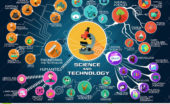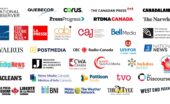Molly Minturn - My family is heartbroken to share that my father died in surgery on Monday, Feb. 10. It…
Wednesday Night #1680 with Linda Naiman
Written by Diana Thebaud Nicholson // May 14, 2014 // Wednesday Nights // 1 Comment
Creativity is thinking up new things, Innovation is doing new things
This Wednesday’s special guest, Vancouver-based Linda Naiman,is founder of Creativity at Work— an international consortium of professional educators, practitioners of arts-based learning, coaches, culture-change agents, ethnographers, and innovation experts.
Linda explains her work: ” Our insights and methodologies are drawn from the multi-disciplinary perspectives of business management, art, design, and social science research. Our focus is on leadership and team development, creativity, collaboration, and cultivating environments that foster innovation.”
Her visit offers us a unique opportunity to turn from our usual topics towards a fascinating aspect of creativity, “Arts in Business”, and to involve all of our creative, innovative Wednesday Nighters including those whose interests are not solely focused on politics, economics and public policy – all of which could likely do with more creativity and innovation along with with a healthy dose of the Arts.
 We have been thinking about the differences between creativity and innovation as the two are frequently confused by those who exemplify neither. Google the terms together and there is an array of entries ranging from the satisfyingly serious, to the superficial and sometimes silly. We would also note that to create is not merely to think about something, while to innovate does imply taking concrete action.
We have been thinking about the differences between creativity and innovation as the two are frequently confused by those who exemplify neither. Google the terms together and there is an array of entries ranging from the satisfyingly serious, to the superficial and sometimes silly. We would also note that to create is not merely to think about something, while to innovate does imply taking concrete action.
In today’s context, innovation appears to have won the buzzword popularity contest, but it seems obvious that successful innovation requires creative thinking as a first step.We would add that there is ample evidence that innovation is not always a good thing.
Business Insider offered a good differentiation from the business perspective in an April 2013 post There’s A Critical Difference Between Creativity And Innovation
“The main difference between creativity and innovation is the focus. Creativity is about unleashing the potential of the mind to conceive new ideas. Those concepts could manifest themselves in any number of ways, but most often, they become something we can see, hear, smell, touch, or taste. However, creative ideas can also be thought experiments within one person’s mind.
Creativity is subjective, making it hard to measure, as our creative friends assert.
Innovation, on the other hand, is completely measurable. Innovation is about introducing change into relatively stable systems. It’s also concerned with the work required to make an idea viable. By identifying an unrecognized and unmet need, an organization can use innovation to apply its creative resources to design an appropriate solution and reap a return on its investment.”
Mitch Joel, one of the most creative thinkers – and writers – we know, has also addressed the question of creativity and innovation, asking “What is that secret sauce that some people have, and can it be found, nurtured, inspired and galvanized into something usable and applicable to my own life?” In attempting to answer the question, he recommends three books by Tom Kelley of IDEO: The Art of Innovation, The Ten Faces Of Innovation (published in 2005) and the most recent, published with his brother David, Creative Confidence. The latter, according to Mitch, debunks the myth that creativity at work is just for the “creative types” and pushes to help each and every one of us to think and be more creative in the work that we do.
Certainly qualifying for a happy blending of creativity and innovation is the work carried out by Dr. Paul Shrivastava of Concordia, who is leading the “Art and Sustainable Enterprise Project” a collaborative undertaking that is exploring the use of the arts and art-based methods for understanding enterprise sustainability. The project examines the dynamic relations between art, aesthetics and sustainable development of organizations. Art influences the sustainability of companies through architecture, aesthetics of workspaces, design of products and services, graphic art in advertising, and arts-based training methods. Sustainable organizations need arts to enhance employee creativity, innovation, attract creative workers, improve worker satisfaction, design eco-friendly and innovative products and services. Arts also allows us to study those aspects of organizational sustainability which are a strength of aesthetics inquiry, such as sensory and emotional experiences often ignored in traditional management studies. The project will also develop instrumental ways of using the arts techniques (from music, dance, painting, photography, etc.) for teaching and training on sustainability issues.
It is good that these principles and practices are applied to business. We ask, however, why we never see mention of application to the public service, which would surely benefit as much – if not more – than the private sector workforce. And what about intense training for politicians of all stripes, as well as world leaders, starting perhaps with the G20?
Joseph Stiglitz poses an interesting question in his Project Syndicate piece, The Innovation Enigma
In a simpler world, where innovation simply meant lowering the cost of production of, say, an automobile, it was easy to assess an innovation’s value. But when innovation affects an automobile’s quality, the task becomes far more difficult. And this is even more apparent in other arenas: How do we accurately assess the fact that, owing to medical progress, heart surgery is more likely to be successful now than in the past, leading to a significant increase in life expectancy and quality of life?
Still, one cannot avoid the uneasy feeling that, when all is said and done, the contribution of recent technological innovations to long-term growth in living standards may be substantially less than the enthusiasts claim. A lot of intellectual effort has been devoted to devising better ways of maximizing advertising and marketing budgets – targeting customers, especially the affluent, who might actually buy the product. But standards of living might have been raised even more if all of this innovative talent had been allocated to more fundamental research – or even to more applied research that could have led to new products.
Yes, being better connected with each other, through Facebook or Twitter, is valuable. But how can we compare these innovations with those like the laser, the transistor, the Turing machine, and the mapping of the human genome, each of which has led to a flood of transformative products?
We are looking forward to the personal memoir Expect Miracles: Recollections of a Lucky Life of our friend David Culver, former CEO of Alcan and iconic corporate leader whose practical management approach, we suggest, was often colored by both creativity and innovation. An excerpt was published in the Gazette over the weekend and is both delightful and insightful.
Not directly related, but because we love the creativity of flashmobs, this performance of Carmina Burana in the Vienna train station is too wonderful not to pass on.




One Comment on "Wednesday Night #1680 with Linda Naiman"
Head of R&D review panel says feds got it right on innovation with 2012 budget
OpenText’s Tom Jenkins says government must now work as ‘convening power’ and bring research and commercial sectors together. (Hill Times)
23 April 2014